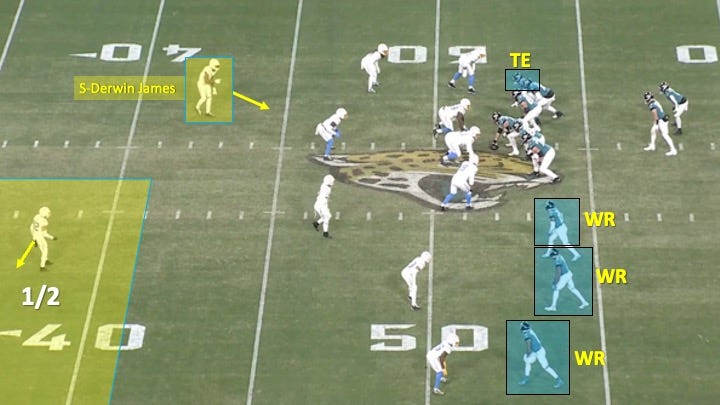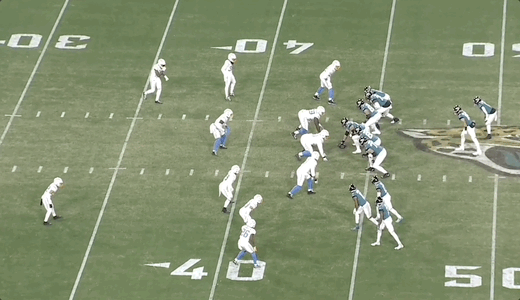Going no-huddle up-tempo can create distinct advantages for an offense.
It allows the play-caller to communicate with the quarterback via headset up until the snap if they can get the play off before 15 seconds remain on the play clock. It can catch the defense in the wrong personnel grouping. It can also lead to busted coverages if the defense isn’t communicating effectively and getting everyone on the same page quickly. Because of this risk, an up-tempo pace can force a defense to be simple, stationary, and predictable with its coverage choices in order to ensure no missed assignments.
It’s that last point that I’ll focus on in this breakdown.
Below is a sequence of plays from the Jaguars’ come-from-behind Wild Card Playoff win against the Chargers during the 2022 postseason.
After picking up a first down to start this particular third-quarter drive, the Jaguars went no-huddle. They aligned in a 3x1 closed formation (3 receivers to one side and a tight end inline to the other). The Chargers would respond by playing cover-2 to the 3-receiver side and quarters to the closed side. Notice safety Derwin James sitting low to the quarters side:
The Jaguars would run it for 8 yards:
They stayed in the no-huddle and came out in another 3x1 closed formation on the next play. The only difference here was that the 3 receivers were aligned in a bunch. The Chargers responded with the same defense, and the Jaguars ran it again:
After picking up a first down, Jacksonville stayed in the no-huddle and used the same formation. Only this time, they flipped it. The Chargers responded with what appeared to be the exact same look. Trevor Lawrence recognized this and started communicating with his receivers, changing the play at the line:







